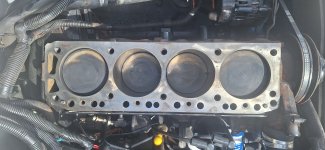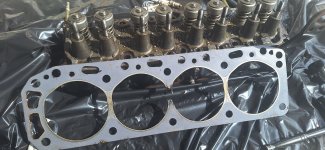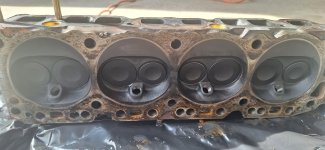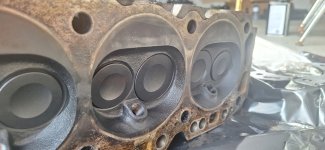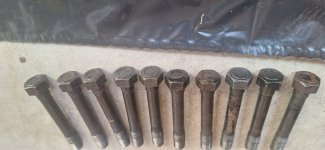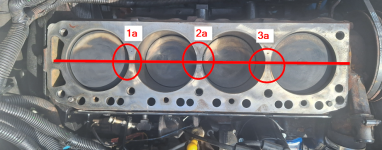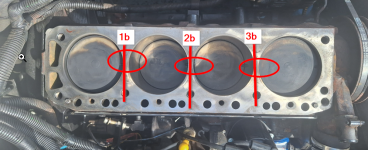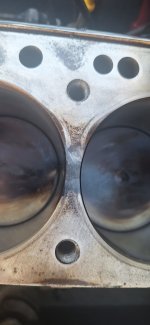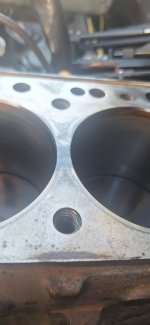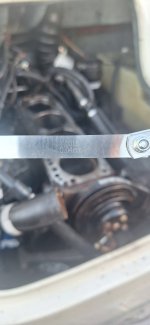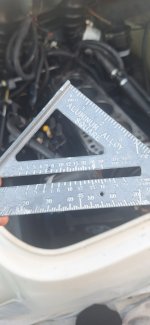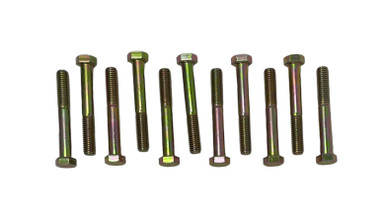kd4pbs
Petty Officer 1st Class
- Joined
- Mar 5, 2012
- Messages
- 319
If the head cracked - due to improper tightening sequence even when there is a gasket that is compressing - then it would have surely failed while in service. A huge thick hunk of cast iron is much more resilient than you might think. The gasket will have already been compressed, so there will be no issue. But if you feel more comfortable following a sequence, then there's no reason not to do so.
As far as the lifter preload, I'm referring to the valve lash (zero lash plus the 1/2 turn or so preload). What you do when setting the lash is actually put a preload on the lifters which pushes the adjusting piston down into the lifter against spring pressure. It is imperative that this is done on the base circle of the camshaft where the lobes are not lifting the lifters. The best way to ensure this is that the cylinder be at or around top dead center on the compression/power stroke. Looking at where the rotor is pointing and working on only that cylinder is a great wat to ensure this.
I have a friend that built a very expensive hopped up 350 for his '68 Camaro back in the 80s. For some reason, he got it in his head that the cold valve lash (it was a solid flat-tappet cam) be set with the piston at TDC between the intake and exhaust strokes. Of course, this is 180º wrong and both intake and exhaust valves are open at this point, known as overlap. I was there when he first started it, and it sounded like a coffee can full of marbles in a paint shaker. I warned him immediately to adjust the valves the proper way, but he insisted on adjusting them by ear while the engine was running and the valve covers off. He never got it right due to constantly chasing the lash down as the cam was being wiped on every revolution. Poor guy. After he realized something was wrong and started tearing it down, it looked like someone sprinkled silver glitter in the oil. At least he realized the error of his ways after new bearings, rings, oil pump, cam, and lifters.
As far as the lifter preload, I'm referring to the valve lash (zero lash plus the 1/2 turn or so preload). What you do when setting the lash is actually put a preload on the lifters which pushes the adjusting piston down into the lifter against spring pressure. It is imperative that this is done on the base circle of the camshaft where the lobes are not lifting the lifters. The best way to ensure this is that the cylinder be at or around top dead center on the compression/power stroke. Looking at where the rotor is pointing and working on only that cylinder is a great wat to ensure this.
I have a friend that built a very expensive hopped up 350 for his '68 Camaro back in the 80s. For some reason, he got it in his head that the cold valve lash (it was a solid flat-tappet cam) be set with the piston at TDC between the intake and exhaust strokes. Of course, this is 180º wrong and both intake and exhaust valves are open at this point, known as overlap. I was there when he first started it, and it sounded like a coffee can full of marbles in a paint shaker. I warned him immediately to adjust the valves the proper way, but he insisted on adjusting them by ear while the engine was running and the valve covers off. He never got it right due to constantly chasing the lash down as the cam was being wiped on every revolution. Poor guy. After he realized something was wrong and started tearing it down, it looked like someone sprinkled silver glitter in the oil. At least he realized the error of his ways after new bearings, rings, oil pump, cam, and lifters.





















